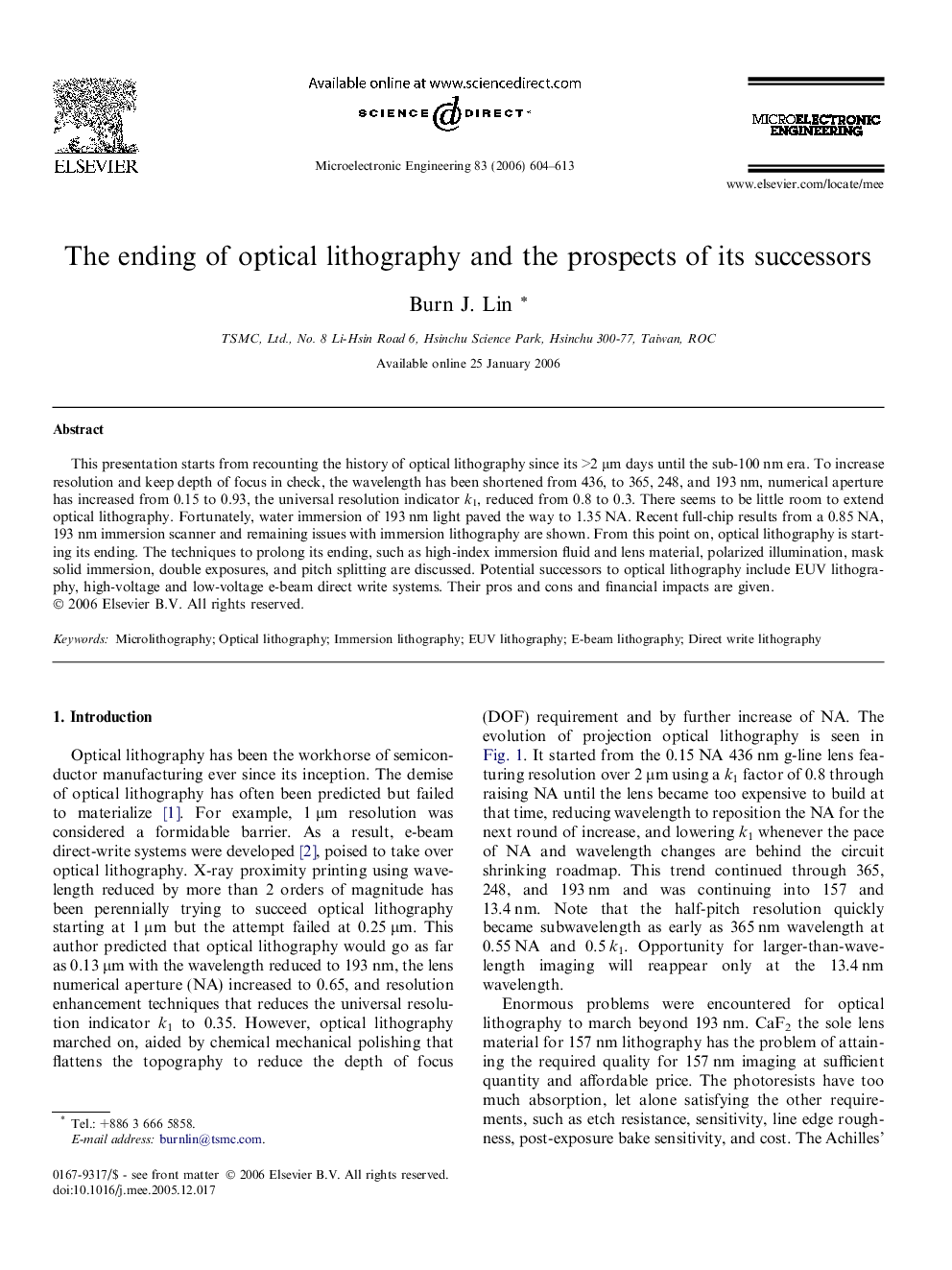| کد مقاله | کد نشریه | سال انتشار | مقاله انگلیسی | نسخه تمام متن |
|---|---|---|---|---|
| 540872 | 1450400 | 2006 | 10 صفحه PDF | دانلود رایگان |

This presentation starts from recounting the history of optical lithography since its >2 μm days until the sub-100 nm era. To increase resolution and keep depth of focus in check, the wavelength has been shortened from 436, to 365, 248, and 193 nm, numerical aperture has increased from 0.15 to 0.93, the universal resolution indicator k1, reduced from 0.8 to 0.3. There seems to be little room to extend optical lithography. Fortunately, water immersion of 193 nm light paved the way to 1.35 NA. Recent full-chip results from a 0.85 NA, 193 nm immersion scanner and remaining issues with immersion lithography are shown. From this point on, optical lithography is starting its ending. The techniques to prolong its ending, such as high-index immersion fluid and lens material, polarized illumination, mask solid immersion, double exposures, and pitch splitting are discussed. Potential successors to optical lithography include EUV lithography, high-voltage and low-voltage e-beam direct write systems. Their pros and cons and financial impacts are given.
Journal: Microelectronic Engineering - Volume 83, Issues 4–9, April–September 2006, Pages 604–613